Understanding Mesh Networking: The Future of Wireless Connectivity
Want to know more about mesh networking? Check out this intro.
Cloud computing has become a major topic of discussion and has opened up the world of the IoT. However, a new terminology is making its way into talks called "mesh networking". Here's a look at what mesh networking is and how it will change the way we look at the internet.
Increasing Interconnectivity
One of the single most important changes in modern society and for computers has been the Internet: a system of unimaginable size that allows anyone to communicate instantly, grants access to an encyclopedia whose size trumps that of all libraries combined and provides a platform for all to voice their own opinions.
While the internet is the backbone of every modern city, there are still many individuals who either have a poor connection to the internet or no connection at all. It has been estimated that up to 60% of the global population still does not have internet access. This lack of connection usually affects the poorest and those who live far away from cities. While there are many who see the internet as a place of cats and funny videos, it also provides a place for people to learn for free (when was the last time AllAboutCircuits, Wikipedia, or HowStuffWorks charged you?), and provide crucial information that otherwise would not be available.
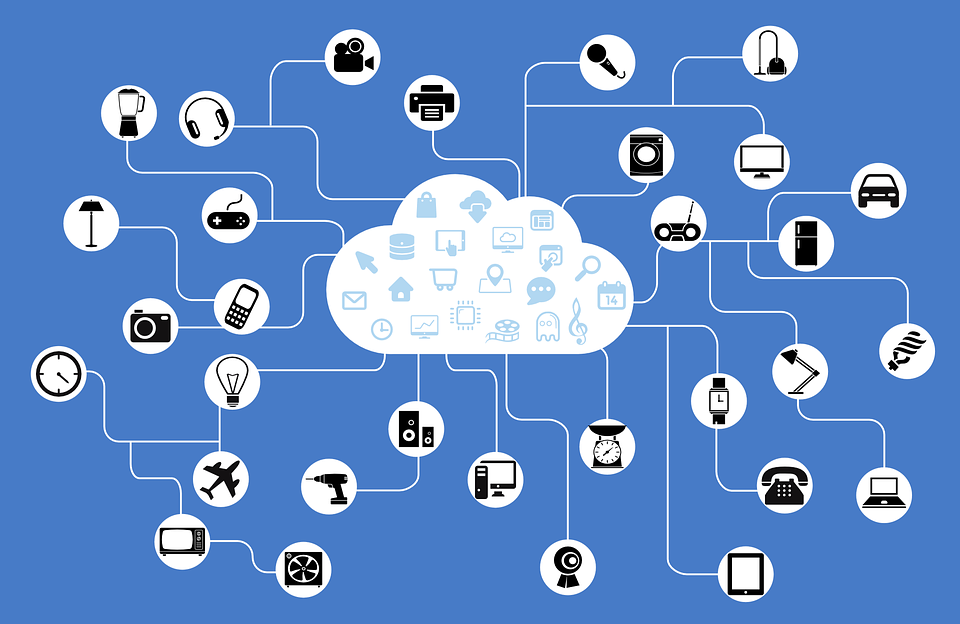
So, what does mesh networking have to offer?
The Singular Node Problem
Before we look at what's new and different about “mesh networking”, we should start with how current systems work. Chances are, your household has internet access and, if it does, it most likely shares this connection with multiple devices including mobile phones, computers, and laptops. Most users of wireless technology have experienced the dreaded “Wi-Fi dead zone” where a room or place has no wireless signal. Such a problem can be quickly solved with a wireless repeater using “internet over power” adaptors.
However, these adaptors still route all signals to the main router which is connected to the internet via one data-path (this could be the phone line or a fiber optic cable). The secondary issue with repeaters is that they need a connection to either another repeater that is connected to the router or a connection to the router, itself.
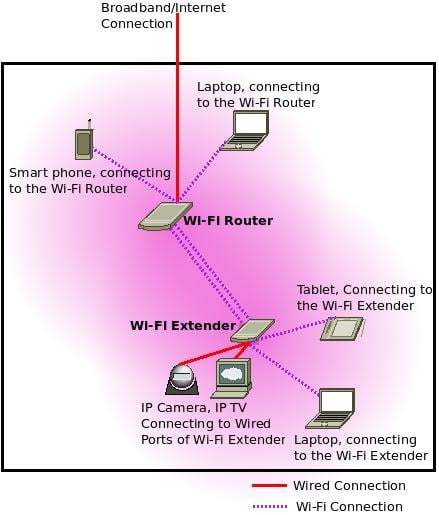
Current home networks rely on a single path between the router and destination. Image courtesy of Rajesh K [CC BY-SA 3.0]
Let's look at a real-world example. My router uses broadband, which currently gives me a top download speed of 512Kb/s. This is dreadfully slow when there are five other users and a large number of internet-enabled devices in the house. Not only does the internet speed have much to be desired, the Wi-Fi coverage in the house is incredibly poor due to the incoming phone line being located at the corner of the bottom of the house where all the walls in the house are brick (i.e., the worst place to locate a radio transmitter).
Currently, I use a customized Wi-Fi antenna and adaptor to pick up the signal and create a local wireless connection for any device in areas away from the main house. Half the problem could be fixed by fixing a wireless repeater in another room but this would still not solve the broadband speed (because such repeaters also require an internet connection and the internet connection in rooms closest to the workshop is very poor). However, in several places, I can receive neighbor Wi-Fi signals very well as well as Bluetooth connections from nearby devices.
I know I'm not the only individual with these issues. Now imagine this same concept at a neighborhood- or city-wide level. Certain areas have better connectivity than others. This is where mesh networking would be very advantageous.
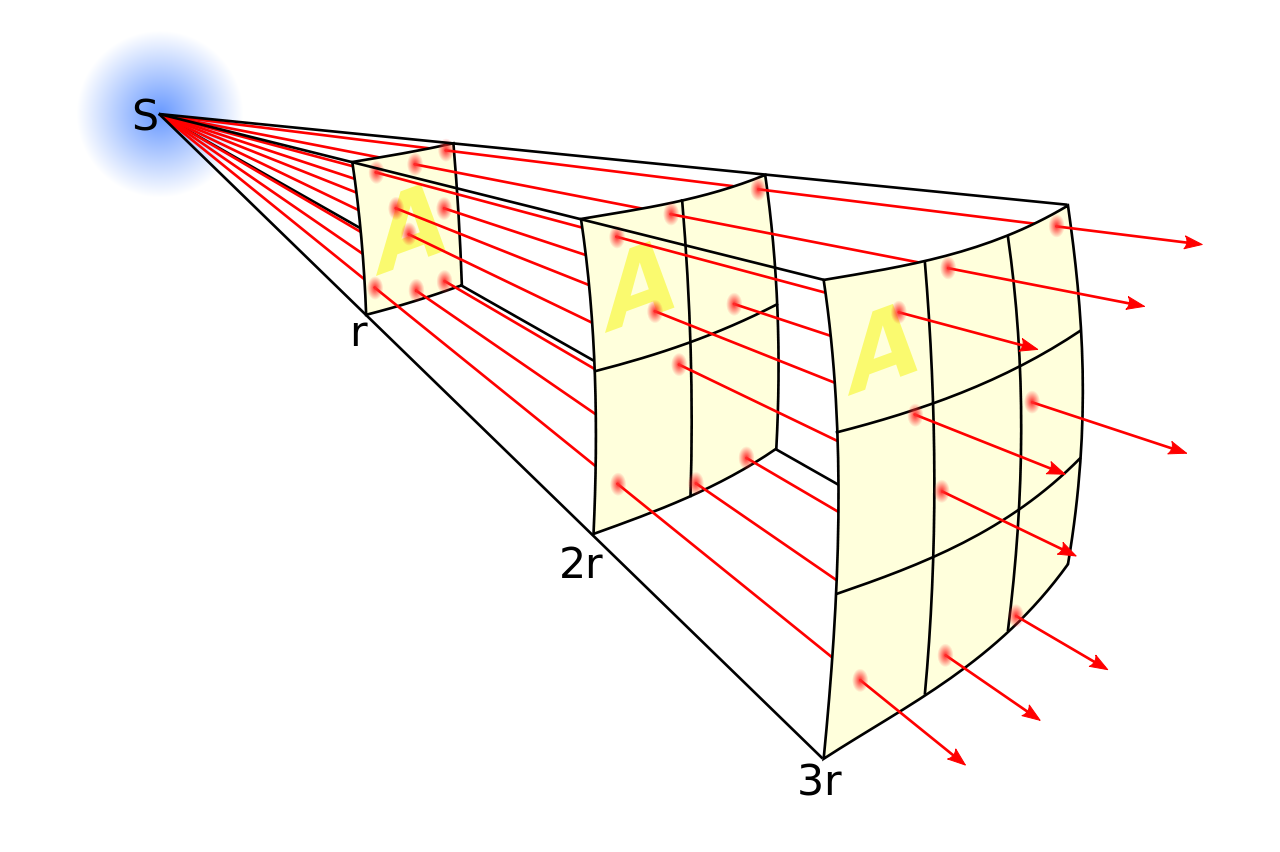
The inverse square law is a real pain for radio communication. Image courtesy of Borb [CC BY-SA 3.0]
Mesh Networking
Mesh networking is a network topology that relies on every single device connected to the “mesh” to be both a user and transceiver.
In a standard network, the router in a home is the main hub and is what every device connects to for internet access. In mesh networking, every device will connect to all devices it can find and be part of a web of devices that all interconnected. Devices in the mesh can communicate to any other device in the mesh even if there is no direct link between a sender and receiver. Messages will travel across the mesh until it reaches the recipient. The method of this transmission depends on the chosen protocol.
This is essentially how the internet at as whole works with many servers interconnected and messages hopping from one server to the next until it reaches the destination. So how is this advantageous in the home and in examples such as the one given above?
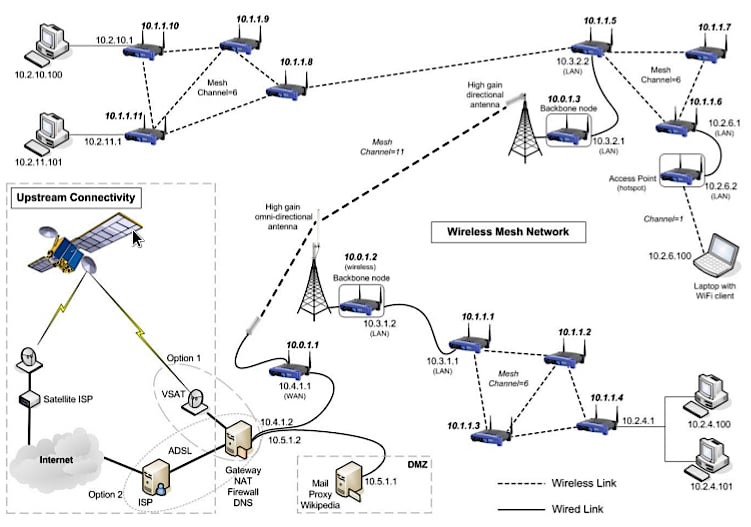
Mesh networking creates a mesh of devices that interconnect to provide internet connectivity for all. Image courtesy of David Johnson, Karel Matthee, Dare Sokoya, Lawrence Mboweni, Ajay Makan, and Henk Kotze (Wireless Africa, Meraka Institute, South Africa) [CC BY-SA 2.5]
Many wireless devices are becoming internet-capable which makes these devices potentially useable in a mesh. Instead of devices in a home all connecting to a network broadcasted by the main router, these devices would connect to a global mesh signal that is hosted by all devices. So long as one of these devices is connected to the main router, all devices in the mesh have internet access (even if a device is too far away from the router).
What makes this advantageous is that devices down the mesh not only have internet access but their signal strength to other nearby devices in the mesh will be considerably higher than being directly connected to the router. Since the signal strength between two neighbor nodes will most likely be better than the router's Wi-Fi broadcast, most devices can transfer data at higher rates.
So, instead of a device having to connect to a router 100 meters away with a download speed of 20KB/s (due to signal degradation), it could potentially be in a mesh with three devices sitting in between it and the router. Each device might only have a distance 25 meters between these nodes (assuming a straight line), allowing the signal strength between the router and the client to now be 16 times stronger if the data from the client hops through each client (according to the inverse square law). This increase in signal strength allows for a larger data throughput and thus improves the internet connection for all devices located away from the internet providing device.
But the advantages of such networking go beyond speed increases for far away devices. The reliability of the network is greater than one comprised of single repeaters since the failure of a single device in the mesh does not bring the entire network down (unless that was the only device sitting between the router and the rest of the mesh). Repeaters can suffer from this as are the single source of a network broadcast for an area.
Mesh Networking Uses & Examples
Mesh networking, while not a new concept, is slowly gaining traction in the industry with many companies and individuals alike competing with their own protocols and frameworks accepted.
One company in particular, Qualcomm, has released a mesh networking platform that will allow devices to form a mesh network and communicate to any other device on that network. The network will allow for devices like bulbs, thermostats, and other home automation systems to cross-communicate while providing connectivity for devices that may otherwise be too far away from an internet source. The Qualcomm platform also allows for device control via voice commands, using voice recognition APIs, a built-in microphone array, and cloud APIs.
Mesh networking will be potentially useful for cities with Wi-Fi hotspots which would be integrated with internet capable devices to create a free mesh network that anyone can use. Imagine trying to get free Wi-Fi for individuals in a park, repeaters would need to be installed which is not only costly but also requires regular maintenance. A mesh network instead would have someone sitting in a cafe with free Wi-Fi which is then connected to a second laptop across the street which is then connected to the phone of someone who is on the other side of the building which connects to another pedestrian's phone which is connected to someone sitting in the park with a laptop. Every single device in that mesh not only has internet access but also require little changes in hardware and software.
This form of networking is especially useful for rural areas without developed connectivity infrastructure. As opposed to trying to create phone networks that connect to every single individual (which is costly), only one place requires a robust internet connection.
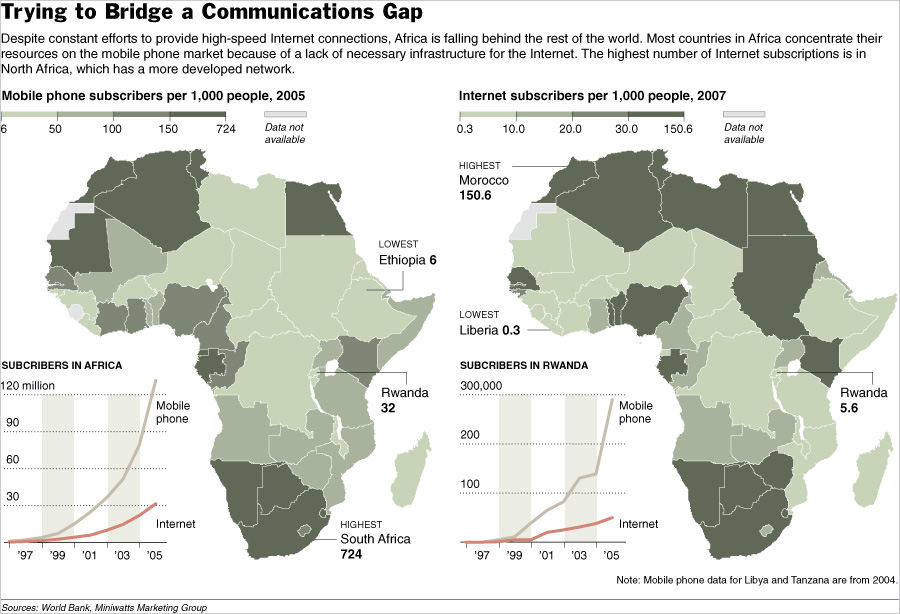
Rural areas could greatly benefit from mesh networking to increase connectivity. Image courtesy of floorvan [CC BY-SA 2.0]
From there, every device in the area can be connected to a mesh, granting internet access for all without the need for expensive infrastructure.
Read More
- Connect a PICAXE to the Internet of Things
- How the Internet of Things Will Change the Way We Grow and Eat Food
- Creating a Simple Data Logger with the RIOT (Realtime Internet of Things) Framework
Summary
Considering that the number of devices connected to the internet is increasing rapidly, it only makes sense to move to a system where all devices can have a reliable connection without the need for direct links.
Just like the IoT and cloud computing, mesh networking will probably be the next big thing in electronics and embedded design with regards to internet capabilities. Which protocol is chosen, however, remains a mystery!







